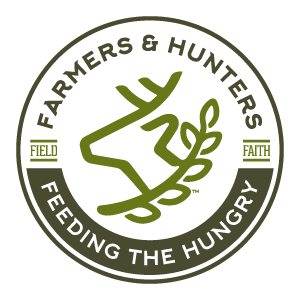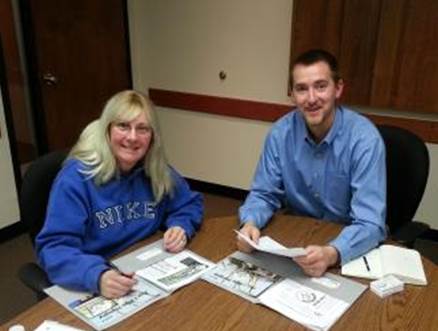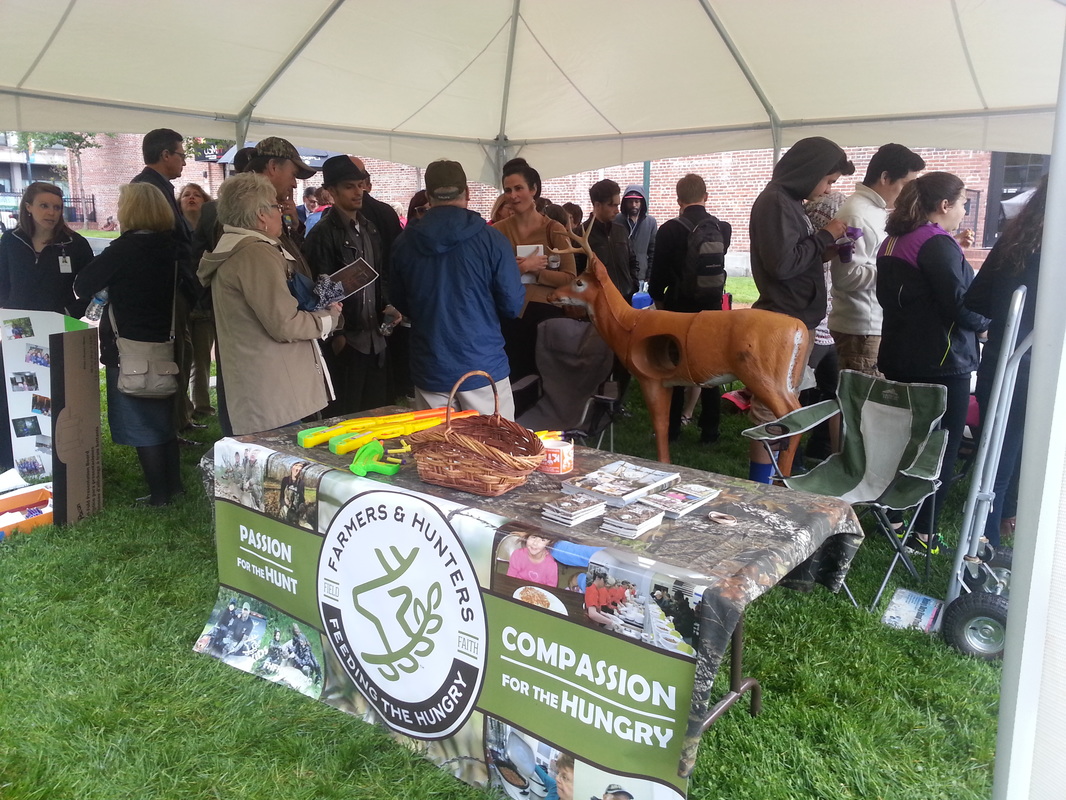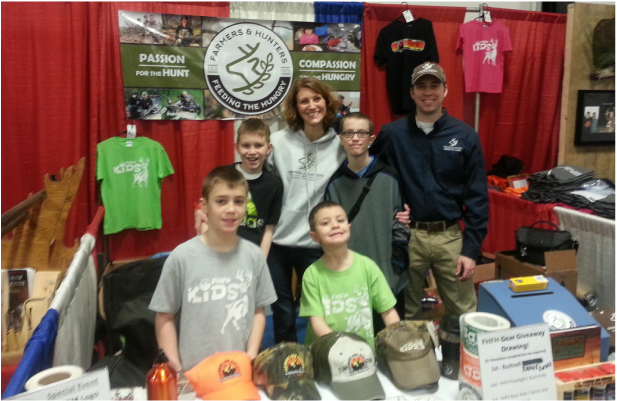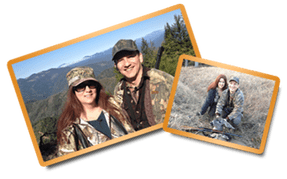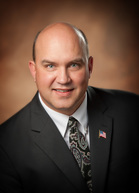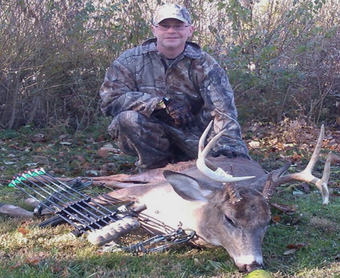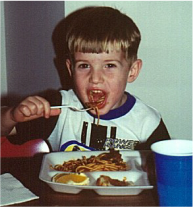News & Updates
FHFH Chapters Planning for the Fall
May 6, 2016 | News
A great space to meet was generously provided by Cargill Salt of White Marsh, MD.
“Washington County Gives” After Event Celebration
May 6, 2016 | News
Together we raised over $4,000 for the cause! THANK YOU to all who were able to support our mission with a gift during the Give Local America Campaign.
Pictured above, FHFH set up a booth along with other non-profits on May 4 in downtown Hagerstown, MD to help celebrate the success of the fundraising event. Attendees could receive information about how FHFH works and take their shot at a 3-D deer with toy nerf equipment.
FHFH Welcomes New Coordinator
Apr 22, 2016 | News
Inspired by a passion for the outdoors and compassion for the needy, Chris joins our other FHFH coordinators who are making a difference to the hungry in their communities.
You can find Chris and the rest of our local chapter coordinators by CLICKING HERE. We encourage you to reach out and support them!
FHFH Participates in Dixie Deer Classic
Apr 22, 2016 | News
Over the course of 3 days, FHFH coordinators were pleased to engage with the public and share the ministry of FHFH. New potential coordinators were sought out in needed areas of NC. Existing chapters and deer donation drop-off sites were made known to hunters.
A drawing was held for various FHFH logo gear items. FHFH was able to talk with new potential sponsors and partnering organizations to further strengthen the reach and impact of FHFH in NC.
She Knows What it’s Like to be Hungry
Apr 16, 2016 | News
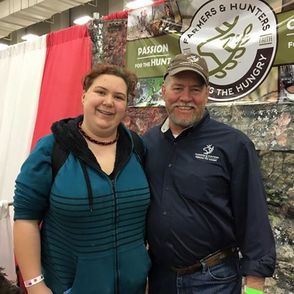 Miss Azsy with John Mollet Central Indiana FHFH Coordinator
Miss Azsy with John Mollet Central Indiana FHFH Coordinator
Thank you, Miss Azsy for your donation to help feed those who are hungry in Indiana! People in need like Miss Azsy are why we do what we do.
Oxford Walmart Teams Up with FHFH in Ohio
Apr 13, 2016 | News
They allowed us to join them in their morning meeting where we had the opportunity to present them with a certificate of appreciation, share about FHFH and how their donation will be used right here in the local area.
Pictured from left to right is Assistant Manager Teneen Hankins, Southwest Ohio FHFH Coordinator Don Distler, Assistant Manager Russell Martin and Human Resources Director Kara Brandenburg.
Thank you Walmart!
He Hunts She Cooks
Apr 12, 2016 | News
Their pilot show “He Hunts She Cooks” can be viewed here.
If you’re looking for inspiration to step out into the wild and to step up your wild game dishes, visit their website.

“Shish-Ka-Bobbie Jo
can be used with venison, antelope, wild boar or even domestic beef tenderloin
Marinade:
1/4 cup lemon juice
1/2 cup **low-sodium soy sauce
2/3 cup olive oil (up to 3/4 cup if needed)
2 bay leaves (whole)
2 heaping Tbs. minced garlic
Venison Loin or Elk Tenderloin approx. 2-3 lbs. (use only trimmed TENDERLOIN OR LOIN (aka backstrap) meat, such as antelope, elk or even domestic beef)
8 oz pkg. Whole Mushrooms
1 Large White Onion
1 Red Bell Pepper
1 Orange Bell Pepper or Yellow Bell Pepper
24 Hours Ahead:
1. Cut venison loin into large pieces (about 2 inches each)
2. Combine all marinade ingredients and set aside.
3. Add meat and mushrooms into a glass or plastic bowl (or, if using a small amount of meat and mushrooms, place everything in a large sealable freezer bag). Pour marinade over meat and mushrooms and marinate for a FULL 24 HOURS.
4. Next day, bring the meat to room temperature by removing it from the fridge 1 hour ahead of cooking.
5. Cut onions and peppers into large chunks.
6. Soak wooden skewers 1/2 hour in warm water.
7. Skewer meat, mushrooms, onions and peppers, alternating between everything.
8. Pre-Heat the grill to about 375-400 degrees.
9. Grill the shish kabob quickly, about 1-2 minutes per side is all you need, since they cook fast.
If not using a grill: Drain meat and mushrooms well from marinade and first sear meat in a very hot pan for 5 minutes. Remove meat and then add mushrooms, and saute for about 3 minutes. Remove mushrooms and then add onions and peppers and saute quickly.
**Make sure to use a low-sodium soy sauce, otherwise, it can be salty.
Serve with any side dish, such as cumin flavored rice.
Supporting Conservation – Donor Advised funds
Apr 12, 2016 | News
The use of donor advised funds is often overlooked as a smart source for your annual charitable contributions. If you are like most families, you send a variety of annual contributions to a variety of charities that hold your passion. You send then a check and take the deduction on your tax return. A more tax efficient method could be to open a DAF account, or build one up with contributions over time, and then make your annual contributions out of the DAF each year to your favorite charities. This method provides you with tax breaks as you build your fund, instead of each year you send a charity a check.
The name donor advised fund comes from the process of the owner of the fund advises the fund to make charitable donations each year to their favorite charities. This is an advisory notice only and the DAF sponsor does not have to do as you advise them to. Most generally, they do exactly as you advise them to unless doing so would potentially create a regulatory issue like self dealing. Your financial advisor can continue to manage the funds inside of your DAF. The advisor just needs to be well versed in building a portfolio to achieve your long term family legacy goals.
Here are the most notable tax breaks for DAFs:
1. The donor receives and immediate tax deduction in the year they contribute to their DAF. Since donor advised funds must be administered by a public charity, contributions to a donor advised fund immediately qualify for maximum income tax benefits. The IRS mandates annual limitations, depending upon the donor’s adjusted gross income (AGI):
- Deduction for cash – Up to 50% of AGI.
- Deduction for securities and other appreciated assets – Up to 30% of AGI.
- There is a five year carry forward for unused deductions.
2. Capital Gains Avoidance – The donor will incur no capital gains on gifts of appreciated assets (like real estate, securities or other illiquid assets).
3. AMT – Alternative Minimum Tax – If the donor’s income is subject to AMT, their contribution to their DAF will reduce their AMT impact.
4. Estate Tax – Your DAF will not be subject to estate taxes.
5. Tax – Free Investment Appreciation – The investments in the DAF appreciate tax free, providing the donor additional funds that they can use for charitable giving.
Always consult your tax advisor.
Mike Handrick
715-614-8200
mike@handrickplanning.com
www.handrickplanning.com
Securities and advisory services offered through Packerland Brokerage Services, Inc., an unaffiliated entity – Member FINRA & SIPC
A Small Change That Would Feed Millions!
Apr 12, 2016 | News
Sometimes a small change can produce big results. Finding gas a few cents per gallon cheaper can save a dollar on a fill up. And packing a lunch instead of getting a fast food burger can save hundreds over the course of a year. But how could a small change in deer donations feed millions of hungry people?
Recently our friends at the National Deer Alliance (NDA) posed two survey questions about sharing meat with others. The first asked about sharing meat with friends and family – which well over half of the responders indicated they have done. The second asked about sharing deer with an organized venison donation program. Just over one out of ten responders (12%) indicated they had done so.
And a national survey from 2011 revealed that 10.9 million people hunt deer annually in the United States. So if one out of ten of them are donating deer to organizations like FHFH that means over a million hunters are already sharing their harvest with the hungry each year!
According to research from the National Shooting Sports Foundation (NSSF), hunters are donating around 2.8 million pounds of meat annually to help feed the hungry. That’s enough meat for over 10 million meals coming from just one out of ten hunters donating.
Please consider how you can either join or continue supporting the cause today. Together we can help share the Lord’s blessing of nutritious meat to feed the hungry of our nation!
Recipe for St. Patrick’s Day
Mar 16, 2016 | News
Dan and Bobbie Jo are currently working on a television show called “He Hunts She Cooks™” where their collaboration for hunting and cooking is brought to life in an exciting and entertaining television series.
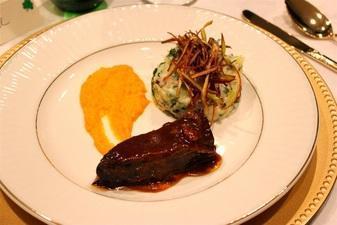
by Bobbie Jo Wasilko
He Hunts She Cooks
Cookin’ Wild
Serves 4-6
Ingredients:
3 pound Venison Bottom Round *(substitute bottom butt, shoulder, or 4 large shanks)
2-12 ounce Bottles Guinness or Kaliber (non-alcoholic) beer
3 cups Beef Stock (low sodium) or Venison Stock
1 Leek (white and light green parts only)
1 Large Onion
2 Carrots
2 Celery Stalks
2 Tbs. Tomato Paste
1 tsp. Fresh Ground Black Pepper
1 Tbs. Onion Powder
3 Sprigs Fresh Thyme
2 Bay Leaves
1 tsp. Caraway Seed (fennel or anise seed)
3 Tbs. All Purpose Flour
Instructions:
*The venison can be made 1-2 days ahead and gently re-heated on top of the stove over low heat.
1. Bring the venison to room temperature 1 hour before cooking.
2. Pre-heat the oven to 300 degrees.
3. Season the meat with salt and pepper.
4. Coat the venison with flour and shake off the excess, and set meat aside.
5. Rinse the leeks to remove all dirt and sand. Then dice the leeks (white and light green parts only), onion, carrots, celery and set aside.
6. Mince the garlic and set aside.
7. Coat a large frying pan with oil and heat to medium-high.
8. Add the venison and brown on both sides, then remove to a large casserole dish, roaster, or dutch oven.
9. Turn down the heat to medium and add the chopped vegetables to the frying pan and sauté until caramelized, about 5 minutes.
10. Add the minced garlic and tomato paste and sauté a minute.
11. Add 1/2 cup Guinness/Kaliber over the vegetables to de-glaze the pan.
12. Pour all the vegetables, remaining Guinness/Kaliber, stock, spices, herbs, and all remaining ingredients over the venison and cover.
13. Place in the oven to braise 3-5 hours. Check at 3-1/2 hours and return to the oven until the meat is tender, if needed.
14. Once the venison is tender when pierced with a fork, remove the venison and discard the bay leaves and thyme stems.
**Serving Suggestion: Serve the venison with traditional Irish Colcannon (mashed potatoes with kale and leeks).
 staff@fhfh.org
staff@fhfh.org  301-739-3000
301-739-3000 